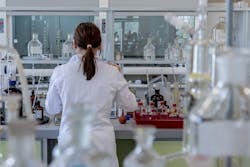Chemists Develop Material for Wastewater Purification
Chemists from a university in Russia have developed a hybrid nanocatalyst for removal of stable organic dyes from wastewater. The Peoples' Friendship University of Russia, also known as RUDN University, is an educational and research institution located in Moscow, Russia. According to Phys.org, the results of the study were public in Inorganic Chemistry.
Industrial dying of plastics, fabrics and other materials requires toxic organic dyes that are dangerous for humans and the environment, according to Phys.org. Therefore, ecologists try to remove residual dyes from plant wastewater.
Using coagulants can speed up the sedimentation of dye particles, but this causes water to silt up. According to Phys.org, water purification with ozone prevents this. However, the technology is expensive. RUDN chemists, together with their colleagues from China, Pakistan, and Portugal, suggest a cheaper and more eco-friendly technique of water purification.
The researchers introduced a purifying hybrid nanomaterial—a grid containing metal atoms and organic molecules. According to Phs.org, the second component of the new nanomaterial was a base made of layered double hydroxides. The two parts self-organize and form a single flat nanostructure. The main feature of this material lies in its unusual structure and is also strong.
The chemists gave a detailed description of the whole synthesis process and then tested the new material as a catalyst for wastewater purification from organic dyes, according to Phys.org.
The hybrid nanogrid was able to purify a water solution from the dyes quickly: Methyl orange was deactivated in one minute, and a stable fluorescent dye called rhodamine 6G neutralized in several minutes.
"Our development would stimulate the creation of new nanomaterials with improved functional properties and wide areas of use in green chemistry. We are going to continue our studies and hope to obtain nanomaterials to remove other contaminants in the future," said Alexander Kirillov, a co-author of the work, Ph.D. in chemistry, and an associate of the Joint Institute for Chemical Studies at RUDN.
